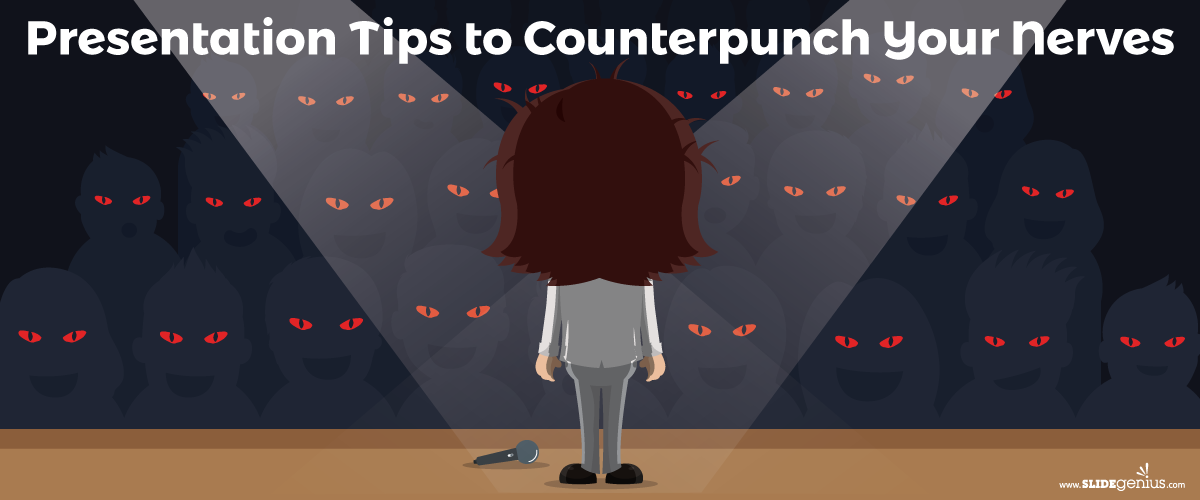
Even experienced presenters can feel nervous before stepping in front of an audience. The fear of public speaking can cause anxiety, shaking, or even mental blocks, but with the right techniques, you can manage and overcome these nerves. The key is to counterpunch your nerves with strategies that build confidence and calm your mind.Here are some presentation tips to help you manage nerves and deliver with confidence:
1. Practice, Practice, Practice
Preparation is the best antidote to nerves. The more you practice your presentation, the more familiar you’ll become with the material, and the less likely you are to feel anxious. Rehearse your presentation out loud multiple times so that you can deliver it naturally and confidently.Why It Works:
- Builds Familiarity: Repeated practice helps you internalize your content, making it easier to recall under pressure.
- Increases Confidence: The more you practice, the more confident you’ll feel about delivering your presentation smoothly.
How to Apply It:
- Practice in front of a mirror, record yourself, or rehearse in front of friends or colleagues.
- Pay attention to your pacing, tone, and body language during rehearsals.
Example: Run through your presentation 3-5 times before the actual event to ensure you’re fully prepared and can anticipate any challenging sections.
2. Breathe Deeply
Deep breathing is a simple yet effective technique to calm your nerves and reduce anxiety before and during your presentation. It helps regulate your heart rate and relaxes tense muscles, allowing you to regain control when you feel overwhelmed.Why It Works:
- Reduces Physical Symptoms: Deep breathing helps reduce the physical symptoms of anxiety, such as a racing heart or shaky hands.
- Centers Your Focus: Focusing on your breath shifts your attention away from negative thoughts or fears, helping you stay present and grounded.
How to Apply It:
- Before starting your presentation, take a few deep breaths—inhale slowly through your nose, hold for a few seconds, and exhale slowly through your mouth.
- Use deep breathing during your presentation if you start to feel nervous.
Example: Take three slow, deep breaths before you walk on stage or begin your virtual presentation to help calm your mind and body.
3. Visualize Success
Visualization is a powerful technique that involves imagining yourself successfully delivering your presentation. By visualizing a positive outcome, you can reduce anxiety and boost your confidence, making it more likely that you’ll perform well in reality.Why It Works:
- Boosts Confidence: Visualization helps replace negative thoughts with positive ones, making you feel more confident and in control.
- Prepares Your Mind: When you visualize success, you mentally rehearse the actions and behaviors that will lead to a positive outcome.
How to Apply It:
- Close your eyes and imagine yourself walking confidently onto the stage, delivering your presentation smoothly, and receiving positive feedback from your audience.
- Visualize every detail, from your body language to the way you articulate your key points.
Example: Before your presentation, spend a few minutes visualizing yourself delivering the presentation confidently and receiving applause from the audience.
4. Channel Nervous Energy into Enthusiasm
Nervous energy doesn’t have to be a bad thing—it can be channeled into enthusiasm and passion. Instead of trying to suppress your nerves, use that energy to engage more with your audience and bring excitement to your presentation.Why It Works:
- Turns Anxiety into Positivity: Channeling your nervous energy into enthusiasm helps transform anxiety into something positive and productive.
- Engages the Audience: Passionate delivery captures the audience’s attention and makes your presentation more compelling.
How to Apply It:
- Focus on the message you’re passionate about and let that passion drive your delivery.
- Use gestures, facial expressions, and a lively tone to express enthusiasm.
Example: If you’re excited about a new project, let that excitement show in your voice and body language, turning nervousness into positive energy.
5. Start with a Strong Opening
The first few moments of your presentation are critical for setting the tone and calming your nerves. Starting with a strong opening—whether it’s a personal story, a surprising fact, or a thought-provoking question—can help you gain control and establish confidence from the get-go.Why It Works:
- Builds Momentum: A strong opening helps you gain confidence early in the presentation, making it easier to maintain your composure throughout.
- Captures Attention: A compelling opening immediately grabs the audience’s attention, allowing you to focus on delivering your message instead of worrying about nerves.
How to Apply It:
- Plan and rehearse your opening several times so that you feel confident in delivering it smoothly.
- Choose an opening that resonates with your audience and relates to the main message of your presentation.
Example: Start with a surprising statistic or a personal anecdote that ties into your presentation topic to establish credibility and engage the audience from the beginning.
Final Thoughts
Overcoming presentation nerves requires preparation, mental focus, and the right techniques to calm your body and mind. By practicing your presentation, using deep breathing, visualizing success, channeling nervous energy into enthusiasm, and starting with a strong opening, you can counterpunch your nerves and deliver with confidence. These tips will help you transform anxiety into positive energy that enhances your performance and engages your audience.





